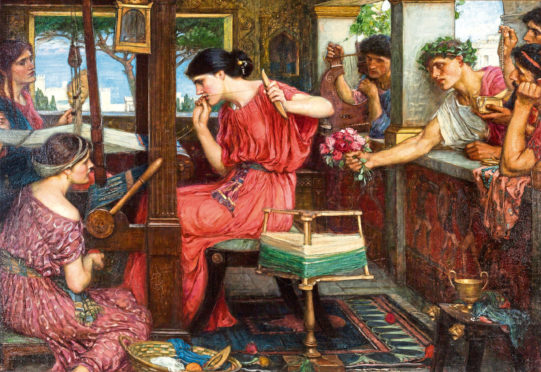This week we look at a painting by pre-Raphaelite artist John William Waterhouse.
It depicts a well-known scene from the epic ancient Greek poem The Odyssey, which tells the story of Odysseus’ long journey home to the island of Ithaca.
Odysseus was the King of Ithaca and participated in the Trojan War – in fact, he was the mind behind the Trojan Horse strategy, where Greek warriors sneaked inside the wall of Troy in a wooden horse.
The Odyssey is broken into three parts. The first part is told from the perspective of Odysseus’ son, Telemachus, and details events in Ithaca during the 20 years Odysseus was away.
In this time, 108 unruly young men, also known as the suitors, had taken up residence in the palace, helping themselves to the wealth of Ithaca and pursuing the Queen, Penelope.
Unlike her husband, Penelope stayed faithful through the entire time, keeping the suitors at bay by promising to consider them for marriage when her weaving was finished. Little did they know that she undid her tapestry every night until Odysseus returned.
The tension of this situation is captured here by Waterhouse in the vivid, detailed style of the Pre-Raphaelite Brotherhood.
Penelope, seen here in pink in front of the loom, is furtively working on her weaving while her attendants assist, and the suitors vie for her attention with gifts and music.
Her concentration and virtue are clear in her body language and she focuses on her work, leaning away from the suitors.
The keen observer may also notice her annoyance as she glances through the side of her eye towards the suitors, perhaps betraying her plans and awareness.
